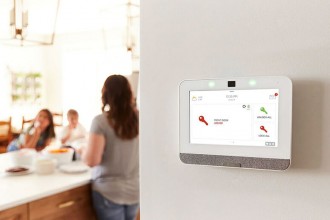For many people, there is nothing better than a good game of golf on a nice, clear day in Ottawa. Nothing but sunny skies, a cool breeze, and a challenging course is a great way to spend some time with friends or to hone your skills alone.
Unfortunately, the real world doesn’t always allow you to have that perfect game of golf. Maybe it’s raining or too hot. What if there are no good courses in your area? What if you don’t have time to play all 18 holes?
Fortunately for you, there is a virtual world that can take the place of the real world in those instances. It’s called a golf simulator and it’s a computerized indoor golf game in your home or office.
This isn’t a Wii Sports type of golf game, this is a high-tech machine that can analyze your swing and can even replicate real courses. It uses radar and light sensors, detecting countless factors that go into your swing and your shot.
Sometimes, they can utilize standalone screens with 3D graphics that are realistic. They are as close to a real game of golf that you are going to get without having to actually step foot outside. Not to mention, they are made for almost every price range. They can cost from a few hundred dollars to as much as $50,000 for the top of the line models.
If you’re wondering how they work, we will tell you and we will even fill you in on why putting one in your home might not be so farfetch’d.
Technology
The screen is connected to a computer with sensors that are specifically made to calculate all aspects of your shot. Placed around the border of the screen are light sensors, radar, and other motion tracking devices. The tracking systems on some of the simulators include one or more 360-degree curtains of infrared beams that are emitted at 60,000 pulses per seconds. This will immediately analyze the ball as it flies.
Once your ball hits the screen, the sensors collect the information and is sent to the computer. It can evaluate your speed, shot angle, spin, trajectory, and more. Some of them can even monitor your swing movement and may even tell you how to improve.
But the simulator is more than just a fancy computer that tells you how far your shot goes. You can choose which course you want to play on and many of them will look like real-life courses, such as pebble beach. Also, you can control the velocity of the wind and weather conditions on the course.
Putting
Simulators may be a great way to analyze your swing and shot under conditions that closely replicate those in the real world. But what about putting? There are sensors that are designed to analyze your putting game.
Most of us are familiar with the small putting greens that you can buy for a few dollars that go in your home or office. Using your own clubs, you can putt the ball up and down a small course, which can slope and incorporate different terrain. There are also more high-tech ways to perfect your stroke.
Some companies now make sensor kits that analyze all aspects of your putt. You can attach the sensor to your club, load a special kind of software into your computer through a USB port and then go through the putting motions as you normally would. The software will look at your distance, stroke path, direction, club head rotation, and more. These are often less expensive than a fully outfitted golf simulator.
Requirements For Home Simulators
If you have some extra cash laying around, then installing a simulator in your home could be a good way to improve your skills. Many simulators are large and often require a lot of room. Some of them need as much as 15-by-20 feet of room for proper operation.
The simulators often consists of a large projection screen and a video projector that will emit the image of the course and data from the computer. They are often surrounded by an enclosure to keep the ball from going all willy-nilly across the room and it can help the golfer block out everything around them.
The simulator itself is a computer system. Some of them can run on an existing computer, while others are stand-alone systems. You will also need the tracking system that analyzes your shot and hitting area to stand on. The tee area is usually made of a simulated grassy material, and all of the equipment will run through a conventional 120-volt outlet.
Unfortunately, due to the high-tech nature of these machines, some of them cost more than a new car. But for those who are serious about improving all aspect of their game, it’s a small price to pay.
Irish Hills Golf and Country Club offer golf simulator and more for Ottawa Golf lovers. To see if they are the perfect fit for your next tee time, call at 613-839-4653!





